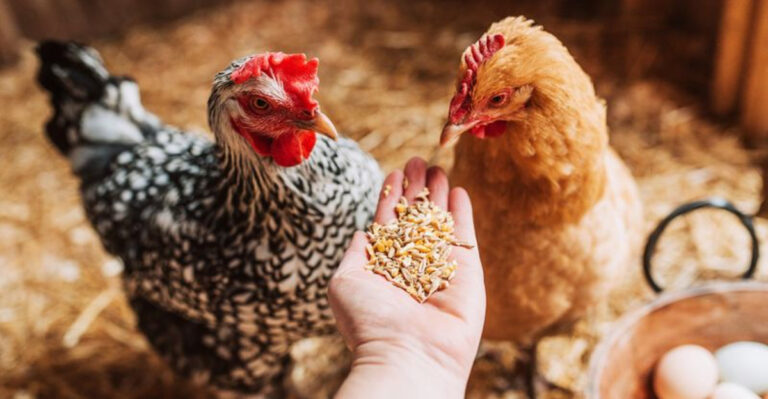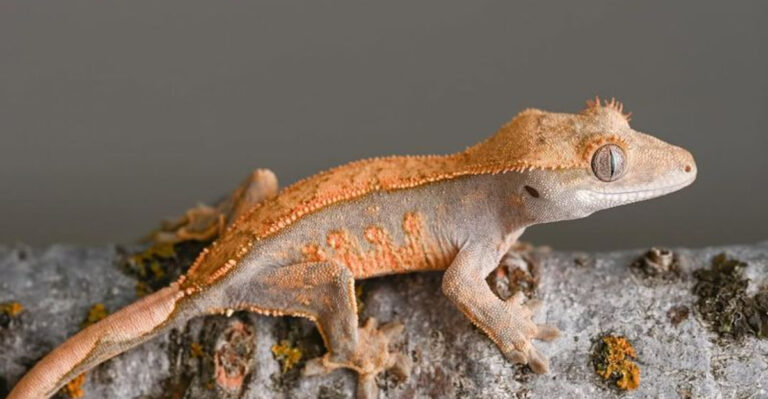10 Things To Do If You Find A Spotted Lanternfly In Your Yard
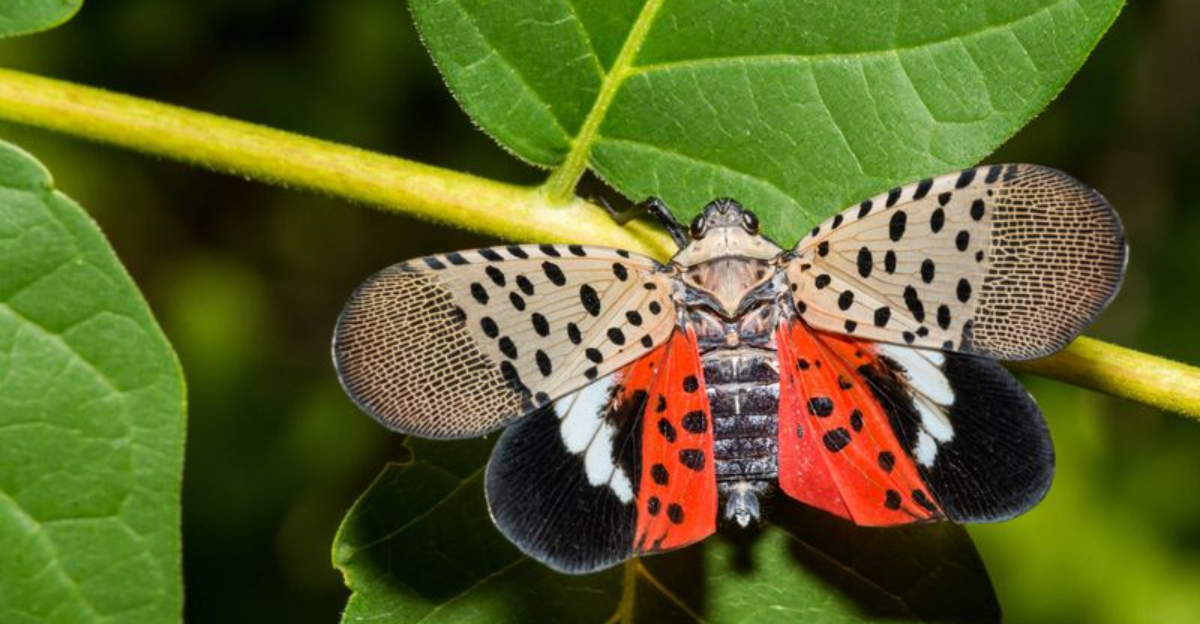
The spotted lanternfly (Lycorma delicatula) presents a significant threat to agriculture and ecosystems, quickly becoming a concern for homeowners and farmers alike.
Originating from Asia, this invasive pest has spread to numerous parts of the world, leaving behind a trail of destruction.
If you spot these critters in your yard, it’s crucial to take immediate action to prevent their proliferation. Here’s a detailed guide on effective things you can do to manage and mitigate the impact of the spotted lanternfly.
1. Identify And Confirm
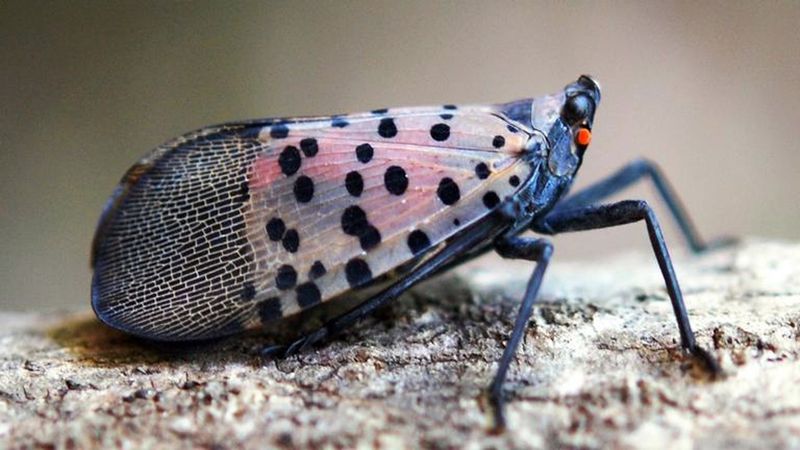
Identifying the spotted lanternfly is your first step in the battle. This creature is quite distinctive, with its grayish wings adorned with black spots and striking red underwings that are hard to miss. These features make them easy to identify, even from a distance.
Getting up close, you’ll notice their black bodies and the characteristic pattern on their wings, which are crucial for correct identification. When you suspect you’ve found one, it’s essential to confirm that it’s indeed a spotted lanternfly.
Use online resources or consult with local agricultural extensions to compare your sighting with verified images. Some insects mimic the appearance of others, so a confirmed identification is necessary. Once confirmed, reporting your find to local authorities can help track the movement of these pests.
They rely on citizen reports to map infestations and strategize control measures. Your vigilance is a frontline defense in managing their spread in the community.
2. Report To Authorities
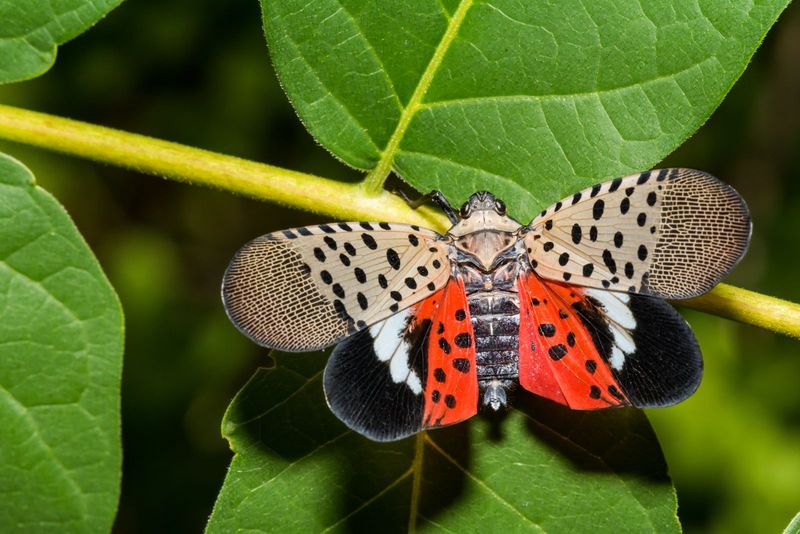
Reporting a spotted lanternfly sighting is a crucial step in managing their spread. Local agricultural departments and extension services need to know where these pests are being found to monitor and control their population effectively.
Your report can assist in building a comprehensive map of their presence, aiding in regional management strategies. You can report sightings through dedicated hotlines or online platforms set up for this purpose. Most states have resources specifically designed to gather this data efficiently.
Providing details such as the location, number of insects, and, if possible, photographs can significantly aid identification and response efforts. Remember, your involvement doesn’t end with just one report. Continuous vigilance and reporting are vital, as these pests can quickly move and infest new areas.
Engaging in community efforts to track and manage these pests can lead to more robust control measures, protecting local agriculture and biodiversity from their damaging effects.
3. Inspect Your Property
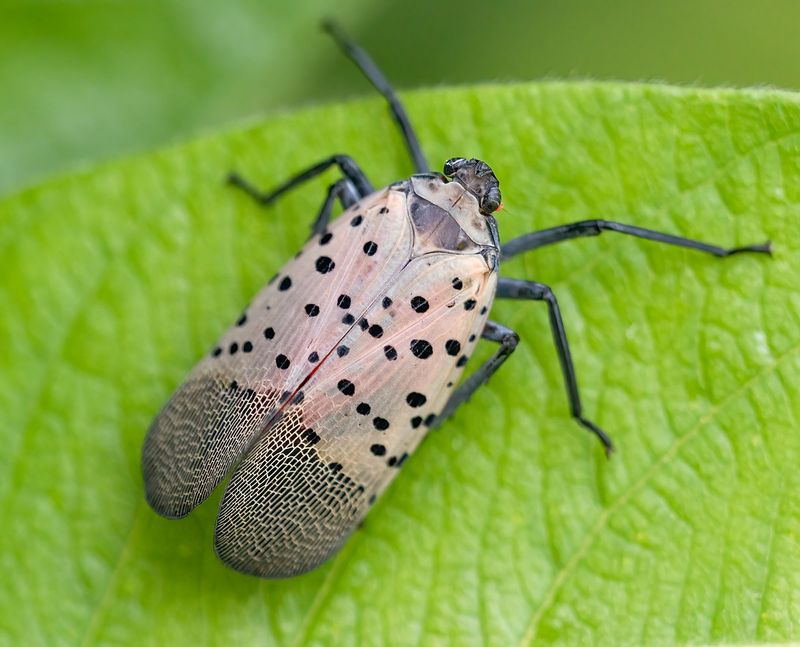
Careful inspection of your property is essential when dealing with spotted lanternflies. Begin by examining trees and plants, as these are the primary habitats for the pest. Pay special attention to tree trunks, branches, and the underside of leaves where they might reside.
These insects can often be found in groups, making larger infestations more noticeable. Look for signs of their presence, such as excretions called honeydew, which can lead to sooty mold on plants. This sticky substance attracts other insects and can damage plant health.
By identifying these signs early, you can take necessary actions to protect your flora. Regular inspections should become a part of your routine, especially during their most active months. Consider setting up reminders or schedules for inspections.
By being proactive and thorough, you can catch potential infestations early before they become significant threats to your garden’s health.
4. Use Traps
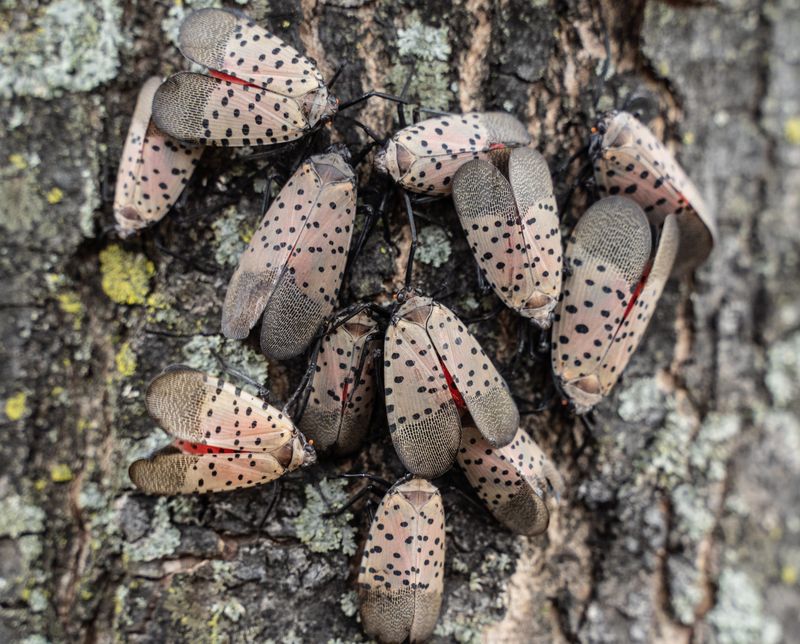
Trapping spotted lanternflies is an effective, hands-on method to reduce their numbers in your yard. You can use commercially available traps or make your own with materials like sticky bands or nets that encircle tree trunks.
These traps work by catching the insects as they move up and down the trees, effectively controlling their population. When setting traps, it’s important to place them correctly. Position them around tree trunks at a height where the lanternflies are likely to travel.
Ensure the traps don’t harm other wildlife, such as birds or small mammals. Some traps come with protective covers to prevent accidental captures of non-target animals. Regularly check and maintain the traps for maximum effectiveness.
Removing trapped insects daily prevents over-accumulation and ensures the trap remains functional. This method, while simple, is a proactive approach to managing spotted lanternflies and can significantly reduce their impact on your garden if consistently utilized.
5. Implement Natural Predators
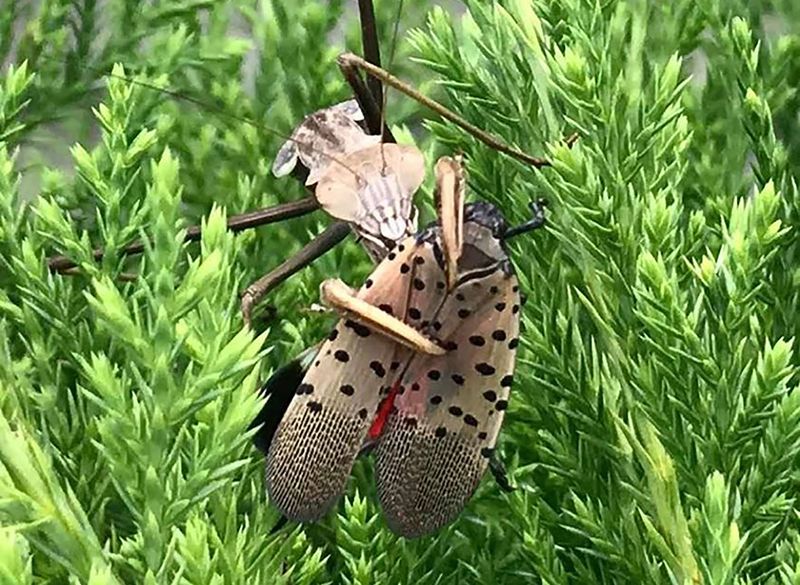
Introducing natural predators is a sustainable way to control spotted lanternfly populations. Certain insects, like ladybugs and praying mantises, feast on these pests, providing a natural form of pest control.
By encouraging these beneficial insects in your garden, you create a balanced ecosystem where the lanternflies have natural enemies. To attract these predators, cultivate a garden environment that supports their needs.
Plant a variety of flowers and shrubs that provide nectar and shelter. Avoid using broad-spectrum pesticides, as these can harm beneficial insect populations along with the pests. Additionally, consider purchasing ladybugs or praying mantis eggs from garden centers.
This can help quickly establish a predator presence in your yard. By fostering these natural partnerships, you embrace an environmentally friendly approach that reduces reliance on chemical controls, promoting biodiversity and resilience in your garden against pest invasions.
6. Manual Removal
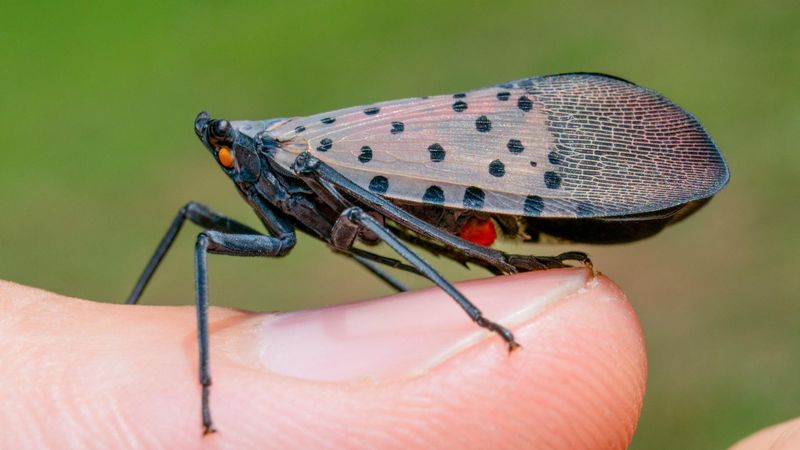
Manual removal of spotted lanternflies is an immediate and effective control method, especially for small infestations. Armed with a pair of gloves, you can physically remove the pests from plants and trees. This method is labor-intensive but allows for precise targeting without the use of chemicals.
To begin, equip yourself with a bucket filled with soapy water. This solution is lethal to the insects when they’re submerged. Carefully pick the spotted lanternflies from the plants and drop them into the bucket, ensuring they are fully immersed.
This hands-on approach is particularly useful when protecting specific plants or small areas where other methods might be impractical. Regularly revisiting affected areas ensures that any new arrivals are promptly dealt with.
While it requires effort and persistence, manual removal is a safe and effective way to control spotted lanternfly populations without impacting other wildlife.
7. Apply Insecticides
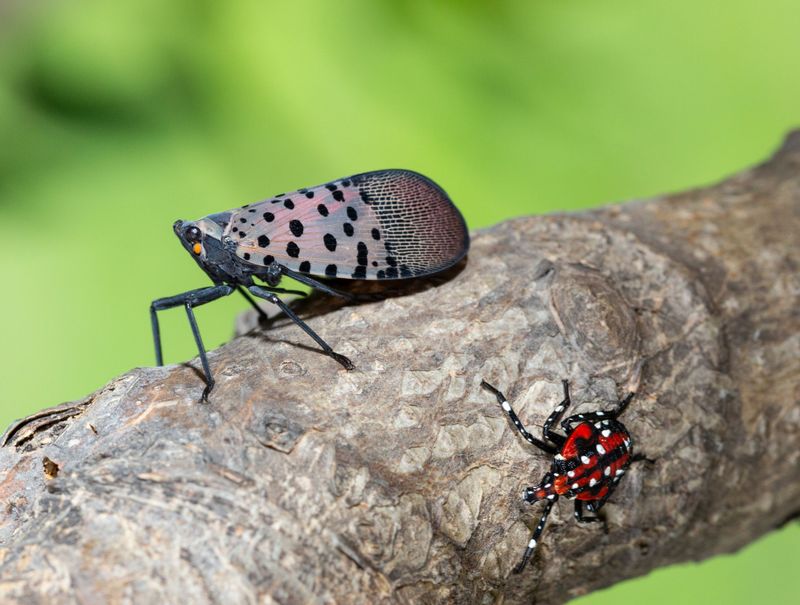
Applying insecticides is a potent method for controlling severe spotted lanternfly infestations. If other management strategies have been exhausted, this option provides a more aggressive approach to reducing their numbers. It’s important to choose insecticides specifically labeled for spotted lanternfly control to ensure effectiveness.
Before application, read and follow all instructions carefully to minimize environmental impact and ensure your safety. Protective gear, like gloves and masks, should always be worn during application. Selective application to affected areas limits exposure to non-target species and concentrates the treatment where it’s most needed.
Consider using systemic insecticides for long-term control, as these are absorbed by plants and affect the insects as they feed. Regular monitoring and follow-up treatments may be necessary to see significant reductions. While powerful, insecticides should be used sparingly and responsibly to protect beneficial insects and the broader ecosystem.
8. Remove Egg Masses
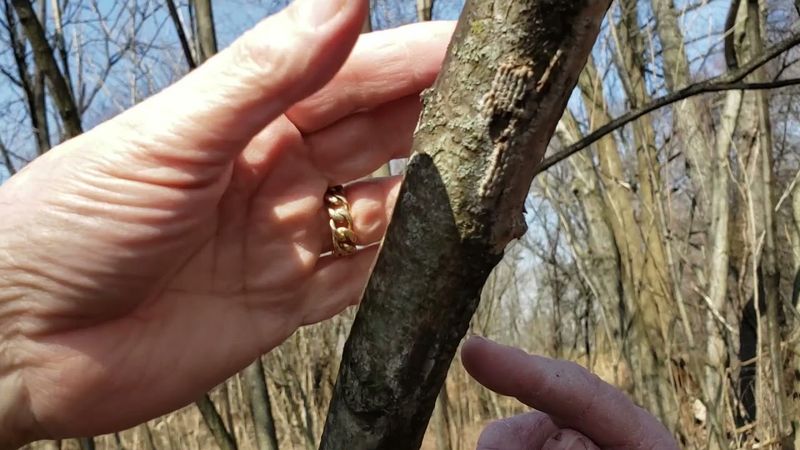
Removing egg masses is a critical step in controlling future populations of spotted lanternflies. During the fall, these insects lay eggs in clusters that look like mud splatters on surfaces like tree trunks, outdoor furniture, and even stones.
Identifying and destroying these egg masses can prevent thousands of new pests from hatching in the spring. To effectively remove them, use a scraper or a stiff card to gently scrape the eggs into a bag or container filled with alcohol or soapy water.
This will get rid of the eggs, ensuring they do not hatch. It’s essential to be thorough, as missing even a few can lead to significant infestations. Regular inspections during the egg-laying season can help identify new masses.
This proactive measure is key to managing spotted lanternfly populations long-term. By diligently removing egg masses, you directly reduce the number of pests that can emerge in your yard, aiding in the overall control strategy.
9. Educate Your Community
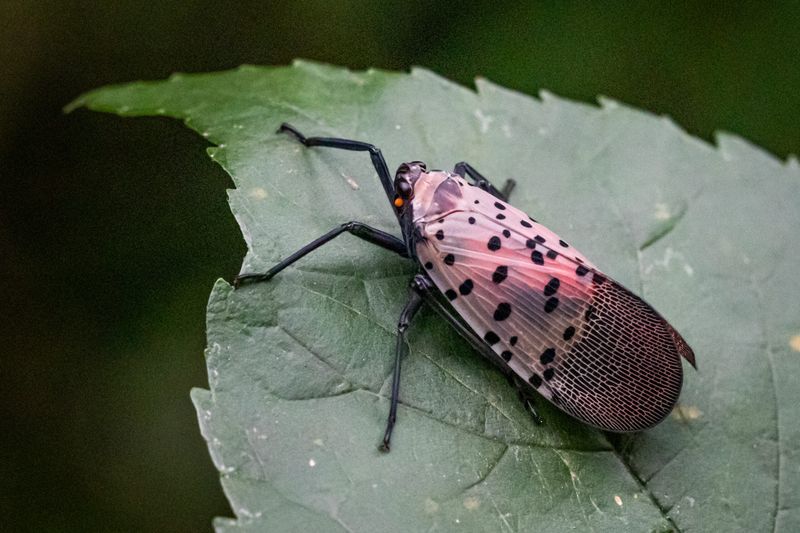
Educating your community about spotted lanternflies can amplify control efforts by spreading awareness and collective action. Organizing workshops or informational meetings in your neighborhood can foster cooperation and shared strategies.
By understanding the pest’s life cycle, impact, and control methods, your community can respond more effectively. Create engaging presentations with visuals to help others recognize the spotted lanternfly and understand the importance of early intervention.
Encourage open dialogue about personal experiences and successful techniques used against these pests. Sharing information amplifies vigilance and contributes to a community-wide defense. In addition to formal gatherings, use social media platforms to share updates and alerts about spotted lanternfly sightings and control measures.
This can reach a broader audience and maintain ongoing engagement. A well-informed community can significantly bolster efforts to curb the spread of these invasive pests, ensuring everyone is equipped to contribute to the cause.
10. Plant Resistant Species
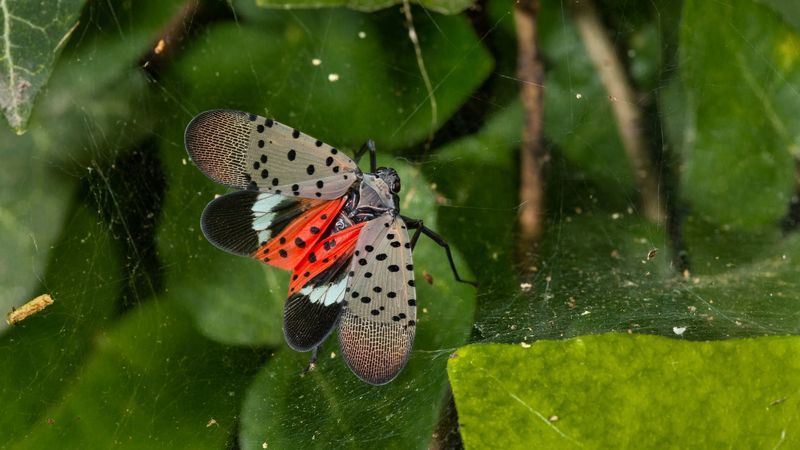
Planting species that are resistant to spotted lanternflies is a strategic long-term solution to reducing their impact. Certain plants naturally deter these pests, either through their scent, taste, or physical properties, making them unattractive as hosts or food sources.
Research plants that are known to be less appealing to spotted lanternflies, and incorporate them into your garden design. Some native species have developed defenses against local pests, making them excellent choices for landscaping.
This type of planting requires less maintenance and offers a sustainable approach to pest management. By rethinking your garden’s composition, you not only protect your existing plants but also contribute to a diverse ecosystem that can withstand pest pressures.



